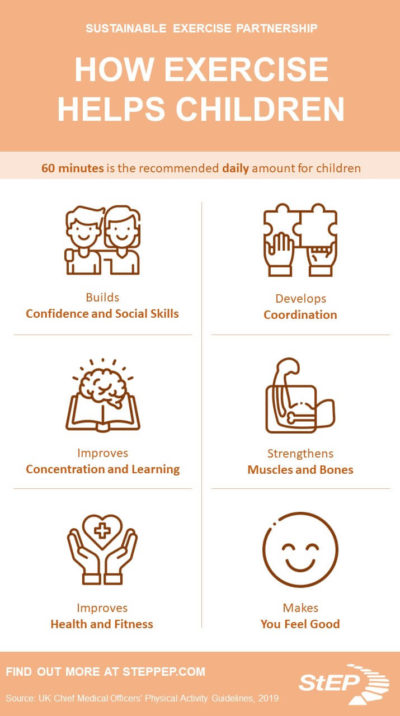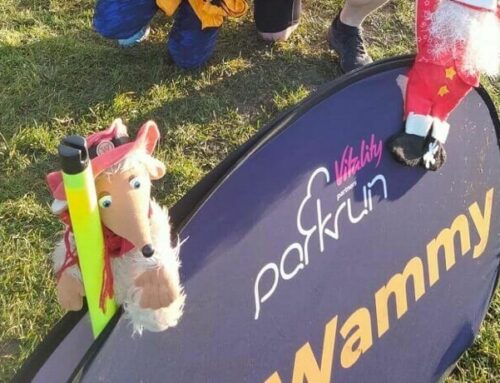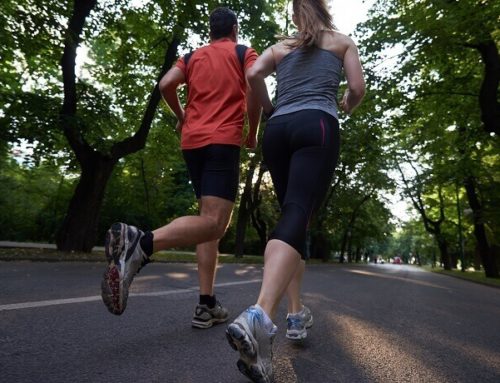Exercising with Kids
It can be hard to find time in your schedule for exercise, and even more difficult if you have parenting duties as well. Use our tips and tricks to increase your physical activity within and around your family life.
Physical Activity in Your Home
Interweave physical activity with household chores and other everyday activities, such as by climbing stairs, gardening or dancing while hoovering. You can also move about while waiting for cooking or for the kettle to boil. While you are observing your children, you could try some simple strength and balance exercises, like push ups for example, and if any spark their interest, encourage them to join in too. Integrating more physical activity seamlessly into your daily routine means you can minimise any potential disruption it may cause. Take note today of when you are standing around or sitting when you could be moving and see what does and doesn’t work for you. One way to encourage regular activity and reduced periods of inactivity is using a step counter, which you can get on your phone, and challenge yourself to an achievable amount of steps each day.
If you want to exercise purposefully, set a time each day that suits you and stick to it! For example, evenings might be good, after the kids have gone to bed. Your lunch break may also be a good chunk of time to squeeze in some exercise. When you have set a time, that can become your motivational trigger to get going. You should also pick an exercise that excites you or something that you want to aim for e.g. take up yoga, challenge yourself to Couch to 5K or join a sports club. Tell someone else when you want to be exercising if you want to be held accountable. If you want to set aside time for certain fitness goals but can only squeeze in 10 minutes a day, you can find lots of quick workouts online. These include the NHS’s 10 minute workouts as well as many resources on YouTube such as The Body Coach TV by Joe Wicks and Yoga with Adrienne.
Getting Your Kids Involved
The UK government guidelines for children is to aim for an average 60 minutes of physical activity each day with a variety of activities to develop movement skills, and muscle and bone strength across the week.
As discussed before you can use bath time and play time to squeeze in some more physical activity not just for you but also for your kids. Try some games which encourage more movement, such as a spy game where you can incorporate walking, running, jumping and rolling to avoid being caught. Your kids can probably imagine a huge amount of scenarios for why they may be running around the room that increase their enjoyment by taking the focus off exercise.

Take your kids out for the day, for free, at your local park. You could go for a walk, a cycle or even a scooter, while exploring nature. Visit a playground or an outdoor gym and try out the different activities on offer. This is an easy, free and sustainable way to increase both you and your kids’ physical activity in a fun, relationship-building way.
Don’t forget that your kids may also be more physically active at school when they have PE but on the other days you could create a PE-like activity for them or use the PE with Joe playlist on YouTube to try Joe Wicks’ take on virtual PE during lockdown. Yoga appears to be enjoyed by many kids and can be a relaxing way to wind them down before bedtime.
Watch this video to find out what exercise is recommended for children and teenagers.
Active Travel
Choose to actively travel the whole or part of the way to school or work to not only ensure you are regularly physically active, but also to reduce your carbon footprint.
Check out this video to find out more about active travel on the school run.
Useful Resources
NHS – Get Active Your Way has lots of resources for increasing your physical activity as a family.
CBeebies – Fun Exercises To Do With The Kids At Home
PE With Joe – YouTube playlist of at-home PE activities for the whole family
Government – Physical Activity Guidance for Children and Young People




Leave A Comment